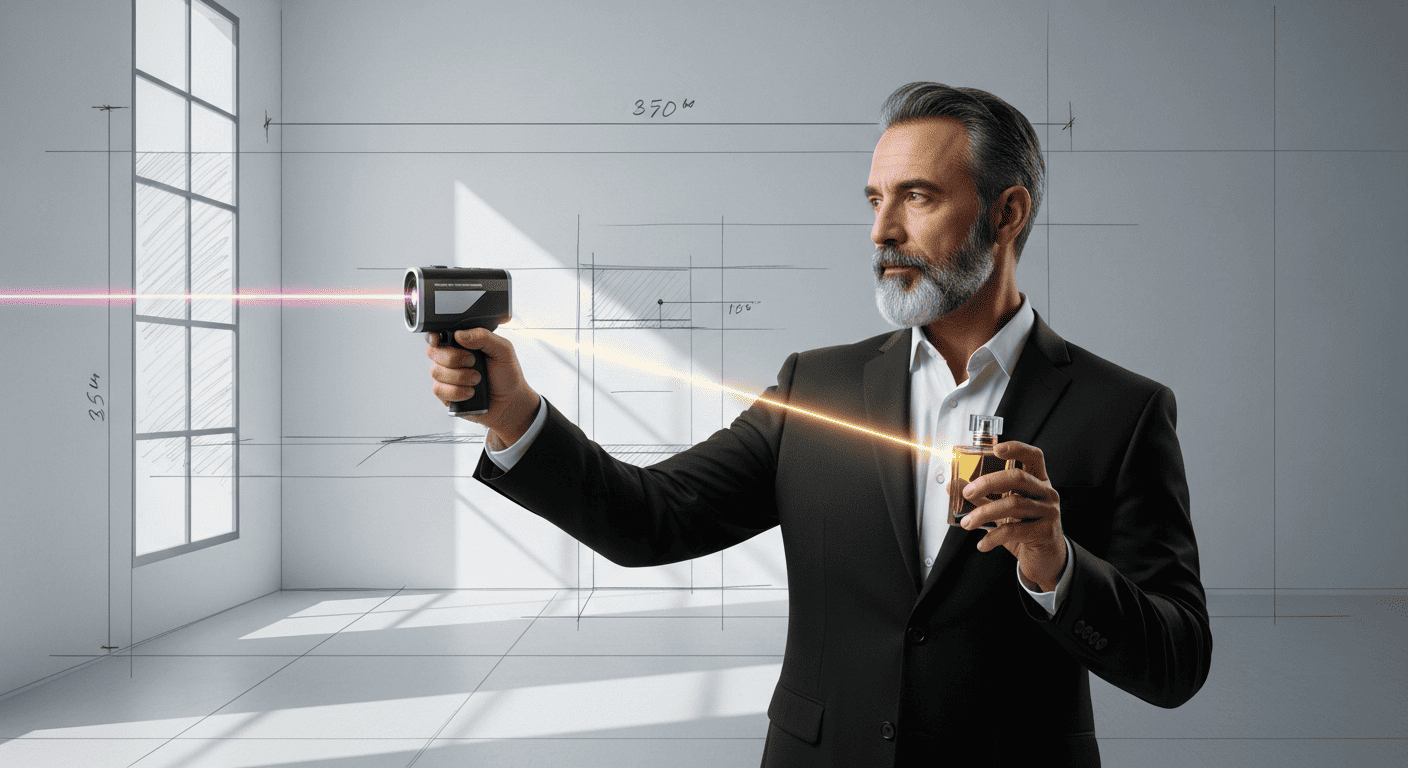Selecting a fragrance transcends mere aesthetics; it is the strategic deployment of an invisible, sophisticated instrument. Every perfume possesses physical characteristics, a form of scent ballistics, that govern its reach and the signature it leaves in its wake. Grasping the physics of these properties elevates the user from a simple wearer to a skilled operator who can wield their fragrance with intent and purpose.
This dynamic behavior is quantified by two key performance metrics: projection, which is the aura of scent radiating from the wearer, and sillage, the lingering trail left behind in the air. Projection creates the initial impression, while sillage crafts the lasting memory, turning your fragrance into a powerful emotional prop. Deliberate mastery over both is what allows for the creation of a truly impactful personal presence.
A deeper look reveals the science governing these effects, where a scent’s performance is dictated by its molecular makeup and external environmental conditions. This knowledge provides an understanding of how to manage the trajectory and impact of a chosen fragrance, ensuring it achieves its desired effect with precision. This transforms the act of applying a perfume into a calculated, strategic deployment of a powerful tool.
Projection: The Initial Impact Zone
Projection is the measure of a fragrance’s initial “launch” from the skin. It is the invisible, expanding cloud of scent that forms your personal scent bubble, typically lasting for the first one or two hours after application. This effect is driven almost entirely by the most volatile molecules in the perfume’s composition—the top notes. These are the lightweight chemical compounds, like citruses and aldehydes, that have the lowest boiling points and are most eager to leap off the skin.
The primary catalyst for this launch is your own body heat, which provides the molecular kinetic energy needed for these molecules to vaporize and become airborne. This is why applying perfume to pulse points like the wrists and neck, where blood flows closer to the surface, is such an effective strategy for maximizing projection. The warmer skin acts as a launchpad, increasing the rate of evaporation and creating a more powerful initial burst. The higher the volatility of the top notes and the warmer the skin, the larger the initial impact zone.
Think of projection as the initial muzzle flash of your scent weapon—it’s the loud, attention-grabbing part of the performance. A fragrance with powerful projection makes an immediate statement upon entering a room, announcing your presence before you’ve spoken a word. However, a projection that is too powerful can be overwhelming, making control and understanding of this initial blast absolutely critical.
Sillage: The Lingering Wake
While projection is the initial explosion, sillage is the subtle, enduring trail that follows. It is the elegant, ghostly presence that lingers in a hallway or elevator, a fragrant memory of your passing. This effect is not created by the volatile top notes, but by the heavyweights of the perfume world: the middle and, most critically, the base notes. These are the larger, heavier molecules like musks, resins, and woods that evaporate very slowly.
As you move, your body creates subtle air currents that lift these heavier molecules from your skin and leave them suspended in the air behind you. This creates a scent trail, a delicate wake that is less about immediate impact and more about creating a lasting, memorable impression. A fragrance with beautiful sillage is the mark of sophistication, suggesting presence without demanding attention. It is a signature, not a shout.
The quality and strength of a fragrance’s sillage are determined by a combination of physical factors. Mastering them allows you to control the potency of the trail you leave behind. The most significant variables include:
- Molecular Weight: Heavier molecules, like those found in amber, musk, and vanilla, have lower volatility and are the primary building blocks of a strong, lingering sillage.
- Airflow: Gentle, indoor air currents are ideal for carrying a scent trail, while strong winds can dissipate it almost instantly.
- Humidity: Humid air can “hold” scent molecules more effectively than dry air, which can cause them to evaporate more quickly, thus enhancing a perfume’s sillage.
Environmental Factors: The Battlefield Conditions
A fragrance does not perform in a vacuum; its ballistic properties are profoundly affected by the surrounding environment. Temperature is the most significant variable, acting as a direct catalyst for evaporation. In warm weather, all the molecules in a fragrance—from the lightest top notes to the heaviest base notes—are energized, leading to a dramatic increase in both projection and sillage. A scent that is subtle in winter can become a powerful bomb in the summer heat.
Humidity is another critical environmental factor that alters a perfume’s behavior. Humid air is already saturated with water vapor, which means there is less “room” for fragrance molecules to evaporate into, causing them to cling to the skin and linger for longer. This is why fragrances often feel richer, deeper, and have a more pronounced trail in tropical or damp climates. A skilled operator must therefore assess these battlefield conditions and adjust their choice of weapon accordingly.
The nature of the space you inhabit also plays a crucial role. In a small, enclosed office, a perfume with powerful projection can quickly become overwhelming and unprofessional, while the same scent might be perfectly appropriate for an outdoor event. Understanding how your fragrance will interact with the environment is key to ensuring your secret weapon is a tool of influence, not an instrument of annoyance.
Mastering Deployment: From Weapon to Tool
The final variable in the scent ballistics equation is the application technique. Where and how you apply a fragrance can dramatically alter its performance, allowing you to dial its projection and sillage up or down. Applying to warm pulse points maximizes projection for an assertive statement, while a light mist on clothing or hair can create a more subtle, persistent sillage. The method of deployment directly calibrates the weapon’s impact.
The quantity of fragrance applied is the most common mistake a novice makes. It is easy to become anosmic—or “nose-blind”—to your own scent after a short time, leading to the temptation to over-apply. This results in “choking out a room,” an overwhelming olfactory assault that is the opposite of sophisticated. The goal is to create a controlled olfactory presence, not a chemical fog.
Ultimately, mastering your fragrance means understanding its inherent properties and deploying it with intention. A light, citrusy eau de cologne is a short-range tool for a brief, refreshing effect. A dense, ambery extrait de parfum is a long-range weapon designed for an entire evening’s engagement. Choosing the right scent for the mission and applying it with skill is what elevates a simple perfume into an effective and powerful personal statement.
Field Intelligence: Frequently Asked Questions
Projection is the “push” of a scent—how far it radiates from your body in a circle around you. It’s about the scent’s aura and initial impact. Sillage is the “pull” or trail—the scent that lingers in the air after you have moved through it. You notice projection when you are near someone, and you notice sillage when they have just left.
The key is to apply it to well-moisturized skin, as hydrated skin holds onto fragrance molecules longer, giving them a more stable platform from which to launch. Applying a scent right after a shower to warm, clean skin can also significantly boost its initial projection. Layering with an unscented lotion or a matching scented body product from the same line also provides a base for the perfume to cling to, enhancing its performance.
Yes, but it dramatically changes the performance. Fabric does not have the warmth of skin, so it prevents the fragrance from “launching” with strong projection. Instead, it holds onto the scent molecules for a very long time, releasing them slowly. This is an excellent technique for creating a very subtle, long-lasting sillage, but you will sacrifice most of the scent’s initial projection and its dynamic evolution.

